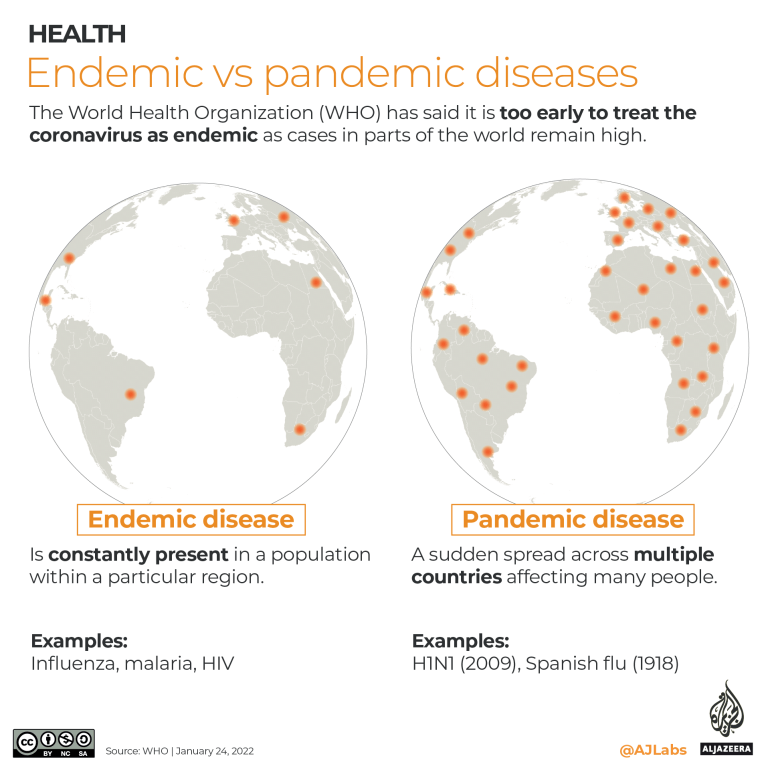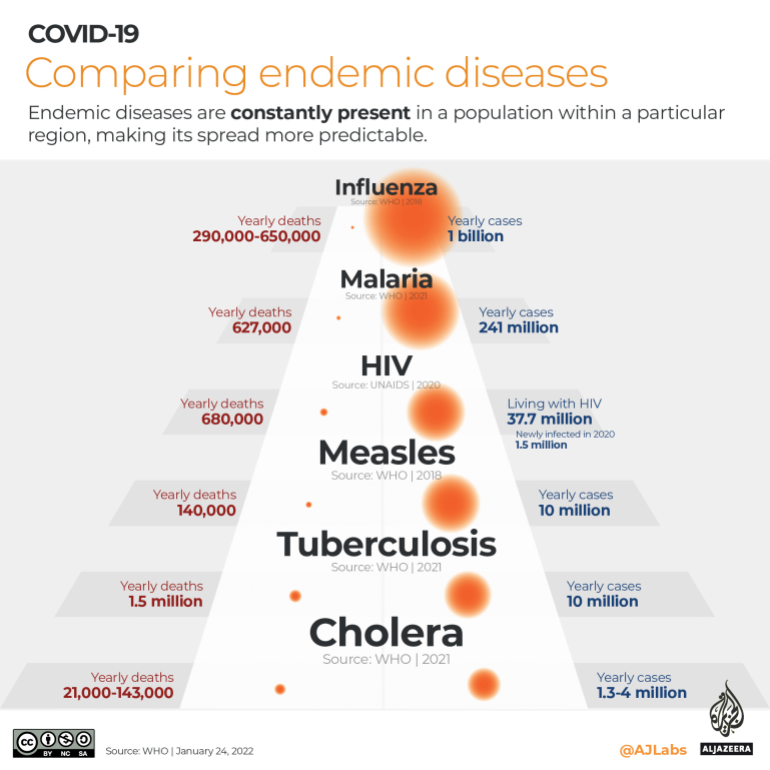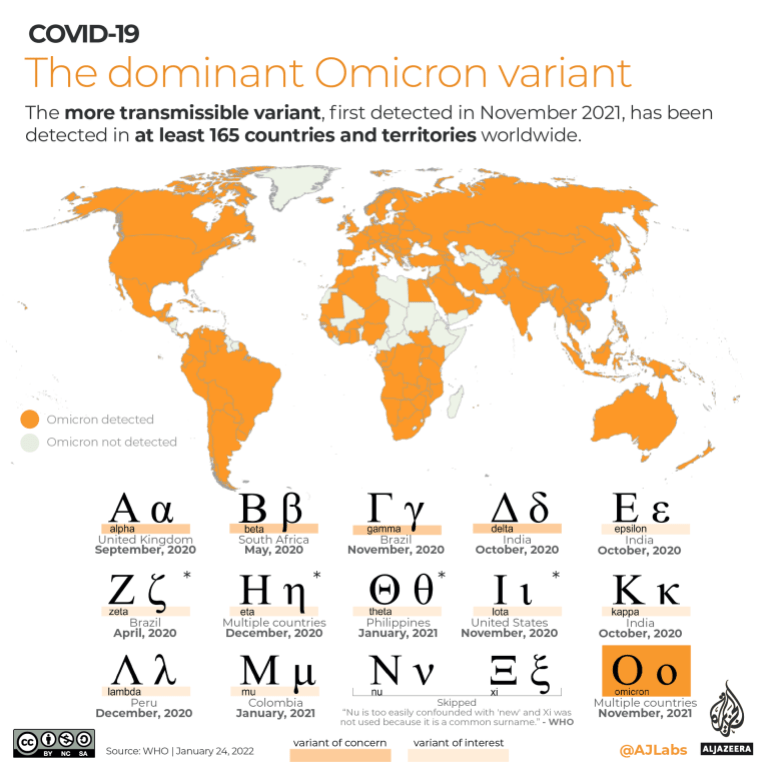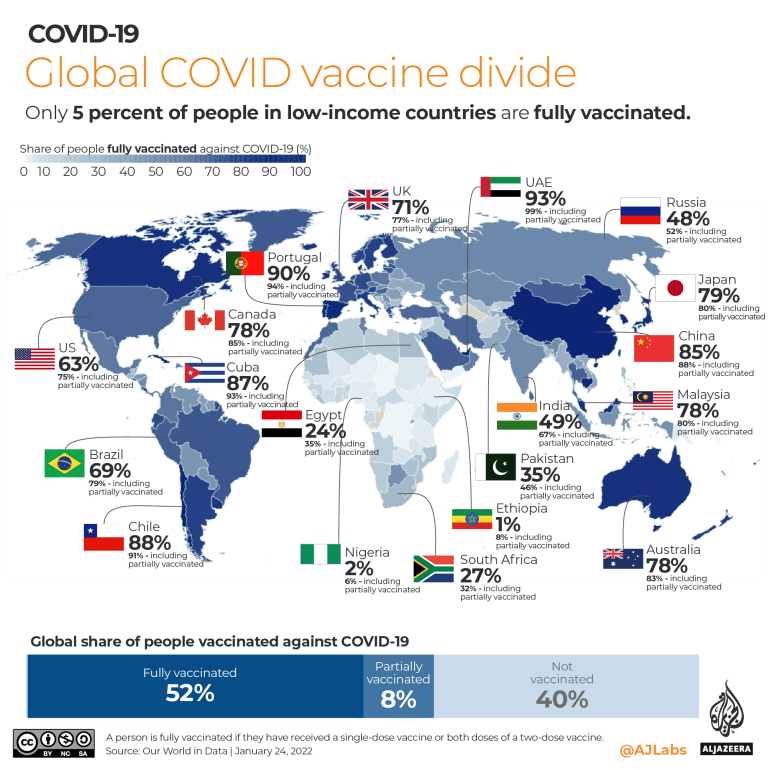The WHO has said calls to treat the coronavirus as endemic are premature as cases in parts of the world remain high.
By Mohammed Haddad
On March 11, 2020, the World Health Organization declared COVID-19 a pandemic – a new disease that has spread around the world, affecting a large number of people.
The term pandemic comes from the Greek word “pan” meaning “all” and “demos” meaning “people”.
In comparison, an endemic – with the prefix en- meaning “in or within”- is the constant presence of a disease within a region, making its spread more predictable.
Many experts expect COVID-19 will not be eradicated, and the disease will become endemic and stay with us, in a milder form.
While the conditions to reclassify COVID-19 as endemic are not precisely defined, many countries – particularly in Europe – have begun lifting restrictions as they move towards living with the disease.
Last week, Spanish Prime Minister Pedro Sanchez called on European officials to treat COVID-19 as endemic due to falling death rates.
Classifying COVID-19 as such could mean that fewer resources would be allocated to combat the disease and people would be subject to less testing as it would likely no longer be considered a severe public health emergency.
But the World Health Organization (WHO) has said it is too early to treat the coronavirus as endemic as cases in parts of the world remain high.

Comparing endemic diseases
Endemic diseases are all around us, from the common cold to more severe diseases including HIV, malaria and tuberculosis.
Epidemiologists, scientists who study the spread of diseases, consider a disease endemic when its levels are consistent and predictable. Endemic diseases are constantly present in a population within a particular region.
Below we compare the number of cases and deaths per year from endemic diseases.

For COVID-19 to become endemic, several factors would need to be considered, including how the disease continues to evolve as well as the type of immunity people acquire through infection and vaccines.
The dominant Omicron variant
Like all viruses, the SARS-COV-2 coronavirus has been mutating since it emerged in late 2019.
Mutations – changes in genetic code – in a virus’s spike protein can affect its ability to infect cells.
Omicron, a more transmissible variant first detected in November 2021, has now been detected in at least 165 countries and territories worldwide.
It has pushed COVID-19 cases to record highs around the world with at least 100 countries recording their all-time highest daily confirmed cases since the start of 2022. There are also an unknown number of people who may have been infected with Omicron but were not tested.

Varying worldwide immunity levels
The WHO predicts more than half of the people in Europe could catch Omicron by March which, coupled with high vaccine rates, should lead to higher levels of immunity.
Herd immunity occurs when a large proportion of a community becomes immune to a disease through infection or vaccines, halting the disease from spreading.
As variants become more infectious, the herd immunity threshold increases. This is why the threshold percentage has gradually been increasing from about 60-70 percent during the original strain to 85 percent with Delta and upwards of 90 percent with Omicron.

Meanwhile, many poorer countries that are still waiting for vaccines may be a long way from seeing the end of the pandemic.
Only 5 percent of people in low-income countries are fully vaccinated according to the latest figures by Our World In Data.

SOURCE: AL JAZEERA


